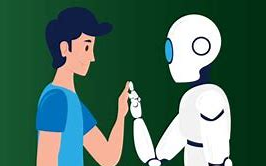After diving into the recent conversations and literature around generative AI in education, I find myself both energized and conflicted. Lucas Wright’s practical use of AI for day-to-day tasks like drafting emails and managing knowledge repositories gave me a tangible sense of how AI can alleviate mental clutter and help streamline routine academic workflows. Meanwhile, Mariel Miller’s discussion on AI as a collaborator in learning – capable of offering personalized, accessible, and even creative support – paints a hopeful picture of what’s possible when students engage with AI thoughtfully and critically. But she also warns of over-reliance, reminding us that learning isn’t just about completing tasks — it’s about doing the hard cognitive work ourselves. I’ve realized that efficiency, while tempting, can come at the cost of deeper understanding if we’re not mindful of how and when we use these tools.

Layered on top of that was the speculative article from the Asian Journal of Distance Education, which creatively explores both utopian and dystopian futures of AI in learning. It made me reflect on how we, as learners, are shaping that future every time we choose to engage with AI — whether for convenience or creativity, enhancement or escape. One of the most thought-provoking takeaways for me was the idea that AI should serve as a partner, not a replacement — supporting human agency rather than diminishing it. There’s no doubt we’re at a turning point. I’m now more committed to asking better questions when I use AI, thinking not just about what I’m getting out of it in the moment, but how it’s impacting my growth long-term. If we can hold onto that awareness, maybe we really can find a balance that honors both human curiosity and machine efficiency.
Leave a Reply
You must be logged in to post a comment.